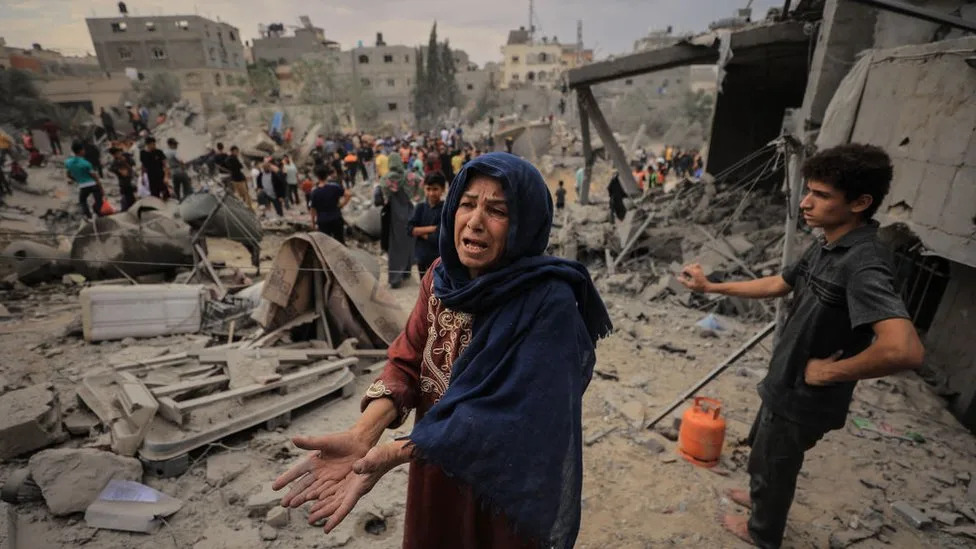What is happening in Israel and Gaza, and what is Hamas?

Hamas gunmen launched an unprecedented assault on Israel from the Gaza Strip on 7 October, killing about 1,200 people and taking about 240 hostages.
Israel responded with air strikes on Gaza and has launched a ground offensive. About 13,000 people have been killed, according to the Hamas-run health ministry.
Effects of the destruction caused by an Israeli bomb east of Khan Younis in the southern Gaza Strip.
What is the goal of Israel's military operation in Gaza?
Israel Defense Forces (IDF) warplanes are carrying out strikes across Gaza while its troops are moving through the north of the territory.
Prime Minister Benjamin Netanyahu says Israel has a "clear goal of destroying Hamas's military and governing capabilities", as well as freeing the hostages.
Mr Netanyahu has refused calls for a ceasefire unless the hostages are released.
He also said that Israel would have "overall security responsibility" for the Gaza Strip "for an indefinite period" after the war ended. However, the US warned him that Israel could not reoccupy the territory.
Israel has drafted 300,000 reservists to boost its standing force of 160,000. It believes Hamas's military wing has about 30,000 members. The group operates from underground tunnels, which it has previously claimed stretch for 500km (310 miles).
Mr Netanyahu has said that Israel had been "not successful" on minimising civilian casualties in Gaza, but blamed Hamas for using them as human shields.
What is happening on the ground in Gaza?
Israeli forces are moving in on the Indonesian hospital in northern Gaza, according to BBC correspondent Yolande Knell. The Hamas-run health ministry said Israeli strikes have killed at least 12 people there.
Hundreds of people are being evacuated from Al-Shifa hospital in northern Gaza, which Israel raided last week.
A group of premature babies who had been there are being transferred to facilities in Egypt.
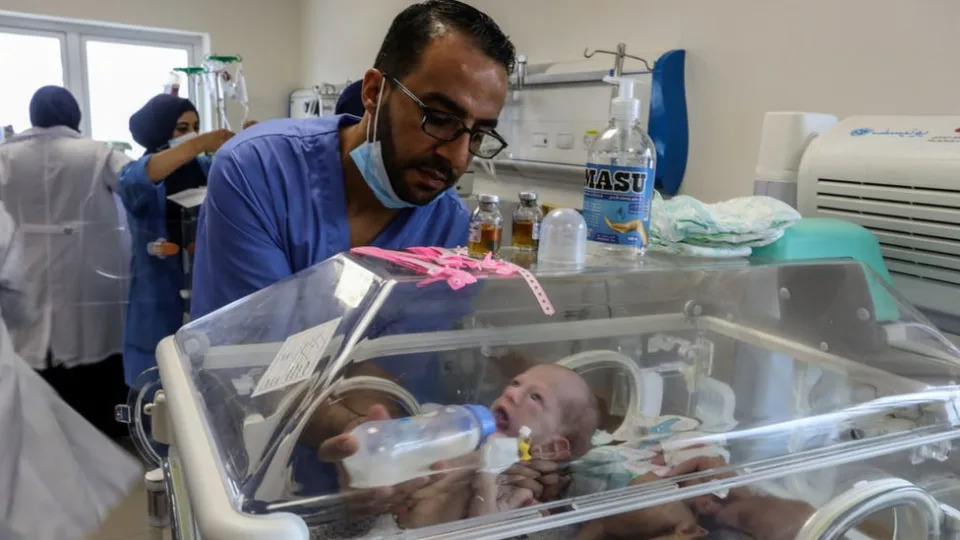
Both Israeli and US intelligence say Al-Shifa had been a key command centre for Hamas - which it denies.
The Israeli military has released a video which, it says, show a tunnel underneath Al-Shifa leading to a blast proof door, of the kind it says Hamas uses for its command centres.
It says that another video it released shows two hostages, one wounded, being moved through hospital on 7 October. The BBC can't independently verify the footage.
The Israeli military has also shared images of what it said were Hamas weapons and ammunition found at Al-Shifa.
Israeli forces have repeatedly warned Palestinians in the north of the territory to head south of the Wadi Gaza river valley to escape the fighting. They have also continued to carry out air strikes in southern Gaza.
What is the humanitarian situation in Gaza?
The UN says that one in every 57 people living in the Gaza Strip "has been killed or wounded in the past five weeks", based on Hamas-run health ministry figures.
The heads of all the major UN agencies have called for an "immediate humanitarian ceasefire", as well as the unconditional release of hostages.
They said "cutting off 2.2 million Palestinians from food, water, medicine, electricity and fuel" was an "outrage", and that more than 29,000 injured people "require immediate treatment".
UN Secretary General Antonio Guterres has said he is "deeply shocked" that two UN schools in Gaza were attacked over the weekend.
Unrwa, the UN agency for Palestinian refugees, said 1.5 million Gaza residents have been displaced and 778,000 are sheltering at its facilities. Another 150,000 are believed to be taking refuge in hospitals and other public buildings.
Israel is now allowing 60,000 litres of fuel a day to enter Gaza, having previously banned all deliveries. However, the UN has said 600,000 litres a day are needed to operate water and desalination plants.
The fuel shortages are also affecting hospitals and bakeries.
Phone and internet services have been repeatedly cut, leaving people unable to call for ambulances or to contact the outside world.
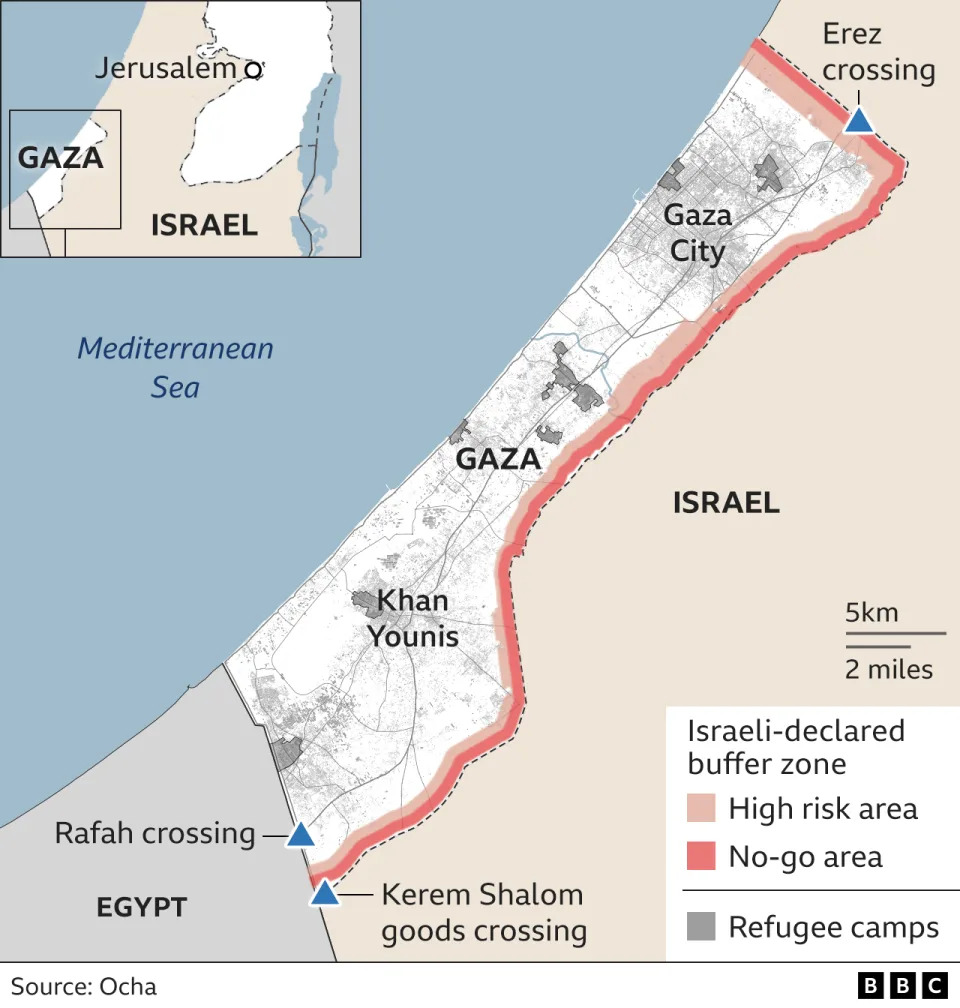
The Rafah border crossing into Egypt, to the south, is the only functioning route for people and goods to leave or enter Gaza.
The crossing reopened for aid supplies on 21 October, but only a small number of the 500 lorry loads which used to arrive every day are currently getting into Gaza.
The border opened again for people to leave Gaza on 1 November. Hundreds of injured people and foreign passport holders - including more than 100 UK citizens - have since crossed into Egypt, but many more remain.
The crossing has shut, for short periods, several times since reopening.
Who are the hostages?
Hamas is holding about 240 hostages in Gaza. Israel says they are hidden across the territory - some of them in Hamas's tunnel network.
Last week, the Israel military said it had found the bodies of 19-year-old Noa Marciano, a soldier in the IDF, and 65-year-old Yehudit Weiss, at sites near Al-Shifa hospital.
It says a medical report determined that Corporal Marciano had been injured in an air strike and then killed by Hamas in Al-Shifa hospital.
Also last week, Palestinian Islamic Jihad - a militant group separate from Hamas - released a video of two Israeli hostages in Gaza - a woman in her 70s called Hanna Katsir, and a teenage boy.
Hamas has released four hostages so far: American-Israeli mother and daughter Judith and Natalie Raanan, and two elderly Israeli women, Nurit Cooper and Yocheved Lifschitz.
Separately, the IDF said one of its soldiers, Private Ori Megidish, was rescued during ground operations in Gaza.
It is thought Hamas may have taken hostages to pressure Israel into freeing some of the estimated 5,100 Palestinians who were held in Israeli prisons at the start of October.
The government of Qatar has been brokering negotiations for the release of the hostages.
What is Hamas and what does it want?
Hamas is a Palestinian group which has ruled the Gaza Strip since 2007. The group is sworn to Israel's destruction and wants to replace it with an Islamic state.
It has fought several wars with Israel since it took power, firing thousands of rockets into Israel, and carrying out other deadly attacks.
In response, Israel has repeatedly attacked Hamas with air strikes. In 2008 and 2014, it also sent troops into Gaza.
Together with Egypt, Israel has blockaded the Gaza Strip since 2007 for what it describes as security reasons.
Hamas - or in some cases its military wing, the Izzedine al-Qassam Brigades - has been designated a terrorist group by Israel, the United States, the European Union and the UK, as well as other powers.
Iran backs the group, providing it with funding, weapons and training.
Why is there a war in Gaza now?
On 7 October, hundreds of Hamas gunmen crossed from the Gaza Strip into southern Israel by breaking through the heavily-fortified perimeter fence, landing by sea, and using paragliders.
It was the most serious cross-border attack Israel has faced in more than a generation.
The gunmen killed about 1,200 people, most of them civilians, in a series of raids on military posts, kibbutzim and a music festival, and took hostages back into Gaza. Previous estimates put the death toll at more than 1,400.
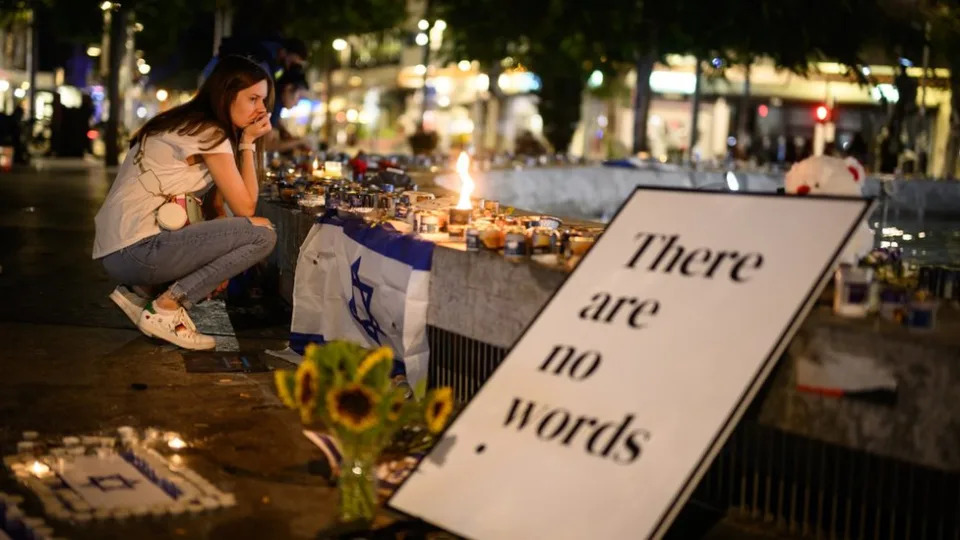
Given the significant resources of Israel's security services, it was astounding that the attack by Hamas was not anticipated, according to the BBC's security correspondent Frank Gardner.
The attack came at a time of soaring Israeli-Palestinian tensions.
This year has been the deadliest on record for Palestinians who live in the Israeli-occupied West Bank, which could have motivated Hamas to strike Israel.
What is the Gaza Strip and how big is it?
The Gaza Strip is a 41km (25-mile) long and 10km-wide territory located between Israel, Egypt and the Mediterranean Sea.
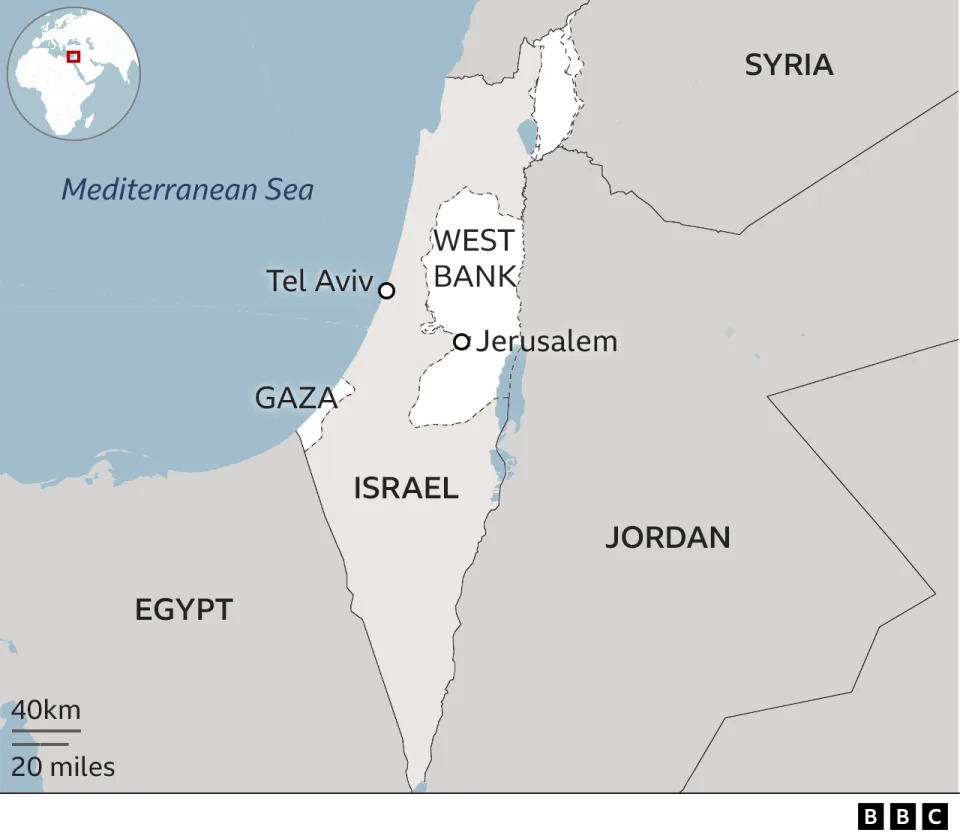
Originally occupied by Egypt, Gaza was captured by Israel during the 1967 Six-Day War.
Israel withdrew its troops and around 7,000 settlers from the territory in 2005.
The territory is home to 2.23 million people and has one of the highest population densities in the world.
Just over 75% of Gaza's population - some 1.7 million people - are registered refugees or descendants of refugees, according to the UN.
Before the latest conflict, more than 500,000 people lived in eight crowded camps located across the Strip.
Israel controls the air space over Gaza and its shoreline, and strictly limits the movement of people and goods.
What is Palestine?
The West Bank and Gaza are known as the Palestinian territories. Along with East Jerusalem and Israel, they formed part of a land known as Palestine from Roman times until the mid-20th Century.
These were also the lands of Jewish kingdoms in the Bible and are seen by many Jews as their ancient homeland.
Israel was declared a state in 1948, although the land is still referred to as Palestine by those who do not recognise the country's right to exist.
The Palestinian president is Mahmoud Abbas, also known as Abu Mazen. He is based in the West Bank, which is under Israeli occupation.
He has been the leader of the Palestinian Authority (PA) since 2005, and represents the Fatah political party, a bitter rival of Hamas.
- Questions and Answers
- Opinion
- Story/Motivational/Inspiring
- Technology
- Art
- Causes
- Crafts
- Dance
- Drinks
- Film/Movie
- Fitness
- Food
- Jeux
- Gardening
- Health
- Domicile
- Literature
- Music
- Networking
- Autre
- Party
- Religion
- Shopping
- Sports
- Theater
- Wellness
- News
- Culture
- War machines and policy


